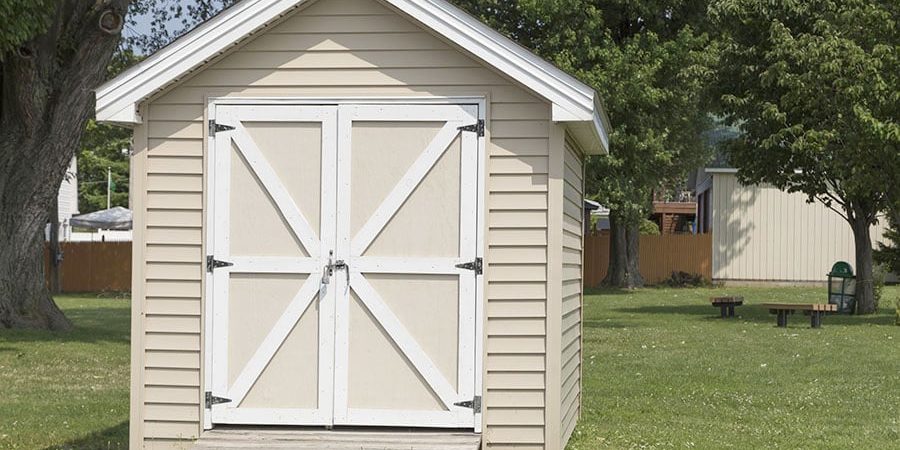With inflation and the rising costs of materials, you are looking for every way that you can to save money. The economy is putting pressure on your family’s finances, but that doesn’t mean that you can put off important projects at your house.
And your next project is to install a shed. Whether that shed will be used for yard tools, heavy equipment, or as a space for you to hang out, you are looking for ways to reduce the final price tag and ensure an easy installation process.
As you consider ways to save, you are asking questions like “do I really need a shed foundation” and “how to build a shed base on grass.”
We’ll answer some of those key questions and help you complete your next shed project on a budget below.
Do I Really Need a Shed Base?
Whether you are looking at a simple garden shed or something more heavy-duty, you may be tempted to skip the installation of a stable base. Skipping the installation of a shed base entirely may seem like an easy way to cut costs for your project.
Choosing not to install a base, while it will save you upfront money, will result in the failure of your project. Placing a shed directly on your lawn or the bare ground, or any other unlevel surface, can cause a variety of problems, including:
- Doors won’t work properly
- The floors will deteriorate
- The frame may be difficult to put together
Can you Put a Shed on Grass?
While you technically can place some types of sheds directly on the lawn, gravel, or dirt without any extensive preparation, that does not mean that you should. Installing a stable, durable base is what will allow your shed to last for many years, making it a worthwhile investment.
There are two primary reasons that you should not install a shed directly on the lawn: moisture damage and uneven surfaces. Even though the lawn may seem like a level surface, it often isn’t as even as it looks.
Wooden Sheds Directly on Grass
Placing a wooden shed directly on the lawn or grass is not a good idea. Direct exposure to the lawn means constant exposure to moisture, which can cause the foundation to become damp and rot.
Plastic Sheds Directly on Grass
Prefabricated plastic sheds are not technically susceptible to water damage, but you still shouldn’t put them directly on the lawn. Moisture from below the shed can still permeate the interior, causing condensation that can damage the contents of your shed.
Metal Sheds Directly on Grass
Metal sheds are extremely heavy and most don’t come with any floor. This means that some type of foundation, such as a concrete base, is needed to support the structure.
Shed Foundation Options
So now we’ve established that putting your shed directly on grass is a bad idea, so what are the best options for your foundation? There is a wide range of shed foundation options, but these are a few of the most common.
Concrete Bases
The most expensive base option, concrete foundations provide durability and longevity for large sheds. While it is reliable, concrete does not have adequate drainage, and in many cases, it’s not worth the cost.
Geocell
Geocell provides the reliability of concrete without the exorbitant costs, which is perfect for sheds on a budget. With built-in drainage in the honeycomb system, geocells are flexible and allow for a variety of infill materials.
Gravel
Gravel is a standard foundation option for small sheds and medium sheds. However, gravel is susceptible to shifting and is not suited for heavy sheds.
Pressure Treated Lumber
A wooden structure of timber bearers, pressure-treated lumber is versatile and flexible. Timber frames don’t cost much but may require a carpenter to construct and install.
Mistakes to Avoid When Building a Shed
Regardless of what size shed you choose or the foundation type that you choose, these are some mistakes that you should look to avoid.
- Improper leveling. When installing a shed, one of the most important steps is leveling the ground. If the ground is not perfectly level or is in a flood-prone area, you will have all kinds of problems with your shed floor and walls.
- Poor placement. When installing a shed, the placement is extremely important. You should avoid placing the shed on any low-lying ground, ensure adequate distance from any property lines, and prepare space around the shed.
Geocell as a Reliable and Affordable Shed Base
Whether you are looking to construct your own, large wooden shed or are going to purchase a small, prefabricated metal structure, choosing a suitable base is what will ensure that your new shed lasts. Placing your shed directly on the grass may seem like a simple way to cut costs, but not installing a solid foundation will cost you more in the long run.
Our team at Backyard Bases has helped homeowners across the country develop strong foundations for their sheds with geocells. Geocell foundations combine reliability and affordability, unlike any other shed foundation.
If you still have questions like: can you put a shed on grass, can you put a shed on dirt or how to put a shed together, our team members are ready to answer any questions that you may have about shed foundations.
Reach out to backyard specialists today at (888)-897-2224 so we can assist you with your shed foundation inquiry.
